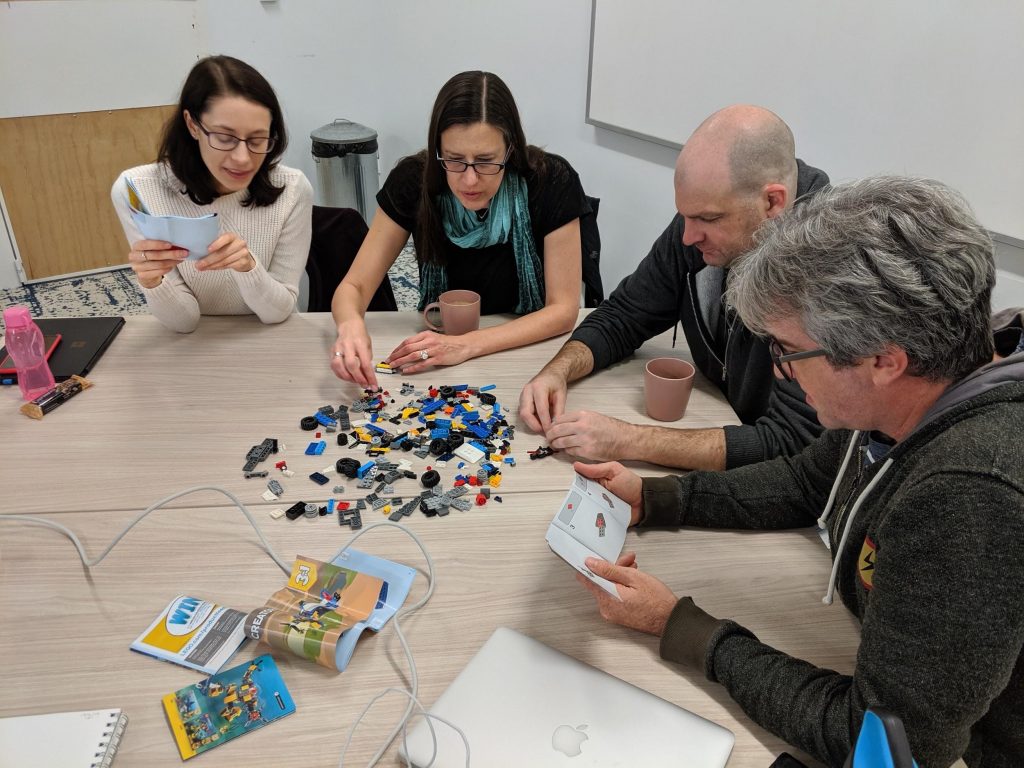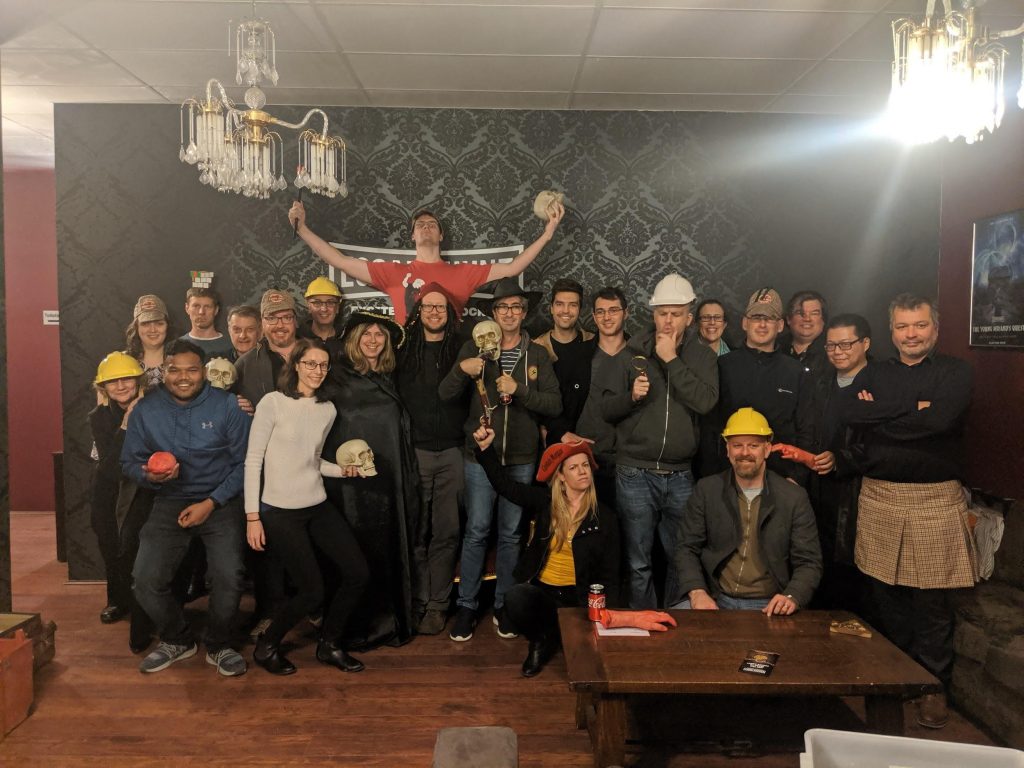Every year, we get our team together for a week that we call “strategy week”. On the surface, it might look like an excuse to play with Lego and do something silly (as the photos in this article will show) but for me, it’s the one thing every year that energises and refocuses me on what’s important.

The communications and Lego exercise is not only a bit of fun, it also means I have a bunch of Lego to play with afterwards
It’s a bit of a cliche, but in my mind (and often in official diagrams) I draw our organisation chart “upside-down”. For me, the role I play as the Chief Executive Officer is all about making sure that I support the team in being able to do their work. Our strategy week is the best part of doing that – I get to hear back from the team about what is really important to them.
The strategy week includes a pretty intensive day (with Lego!) so that we can do a few things, such as:
- present on how we’ve gone as a team that year (across a whole range of different areas, such as financial performance, strategy, teamwork and the like),
- propose a range of different things (which are presented from the team themselves, as well) that we then discuss, and
- hear from the team about what they would like to see change and improve.
Of course, a strategy day needs to include some time to let our hair down (easier for some than others). So, after our strategy day we headed out to the Escape room in Fremantle where a lot of fun was had by all (as evidenced from the group shot we had afterwards!).
But what happens as a result of the strategy day? Apart from a glorious picture of how strange we all are?
In this year’s strategy day, we ended up with a listing of over 80 things that the team would want to see change, and it ranged from things such as people taking leave, to some pretty big improvements to our systems and processes (especially pertinent since we are currently undergoing our ISO accreditations – more on that another time). These items – opportunities for improvement – were then run through the matrix of “what do we want to do, and what can we afford to do”. We’re still a small business, so we have to be pragmatic about what we can do, after all.
The end result is a listing of things that we want to get done, which are then planned out and are delivered over time. Some of these things are pretty small, so they’re done quickly. And others will take more time, and resources. In order to keep us all honest, we actually look at these every single week and how we are tracking in our weekly team meeting, where we report on them in a “Red Amber Green” quick review. So far, we’ve already got good traction on 20 of these tasks, with another 37 underway – we’re well over halfway already in the first month – but I know the long tail is coming with the harder ones to come.
I think it’s really, really important that we hold ourselves to account here, though – across all of the organisation – so that we can continue to build a better company, identify the processes we need to streamline and improve the solutions we deliver – together.
Piers
As always, you can follow or contact us via Facebook, Twitter or LinkedIn.


Nice blog! The team seems huge!
Thanks Jessie, it sure does!